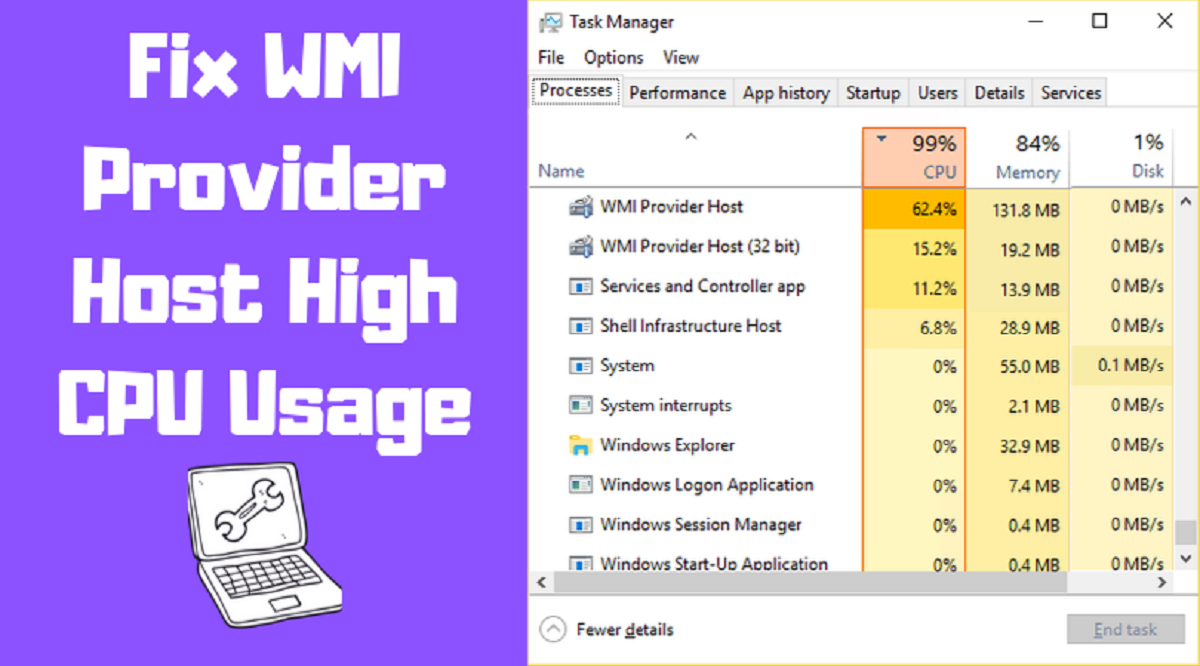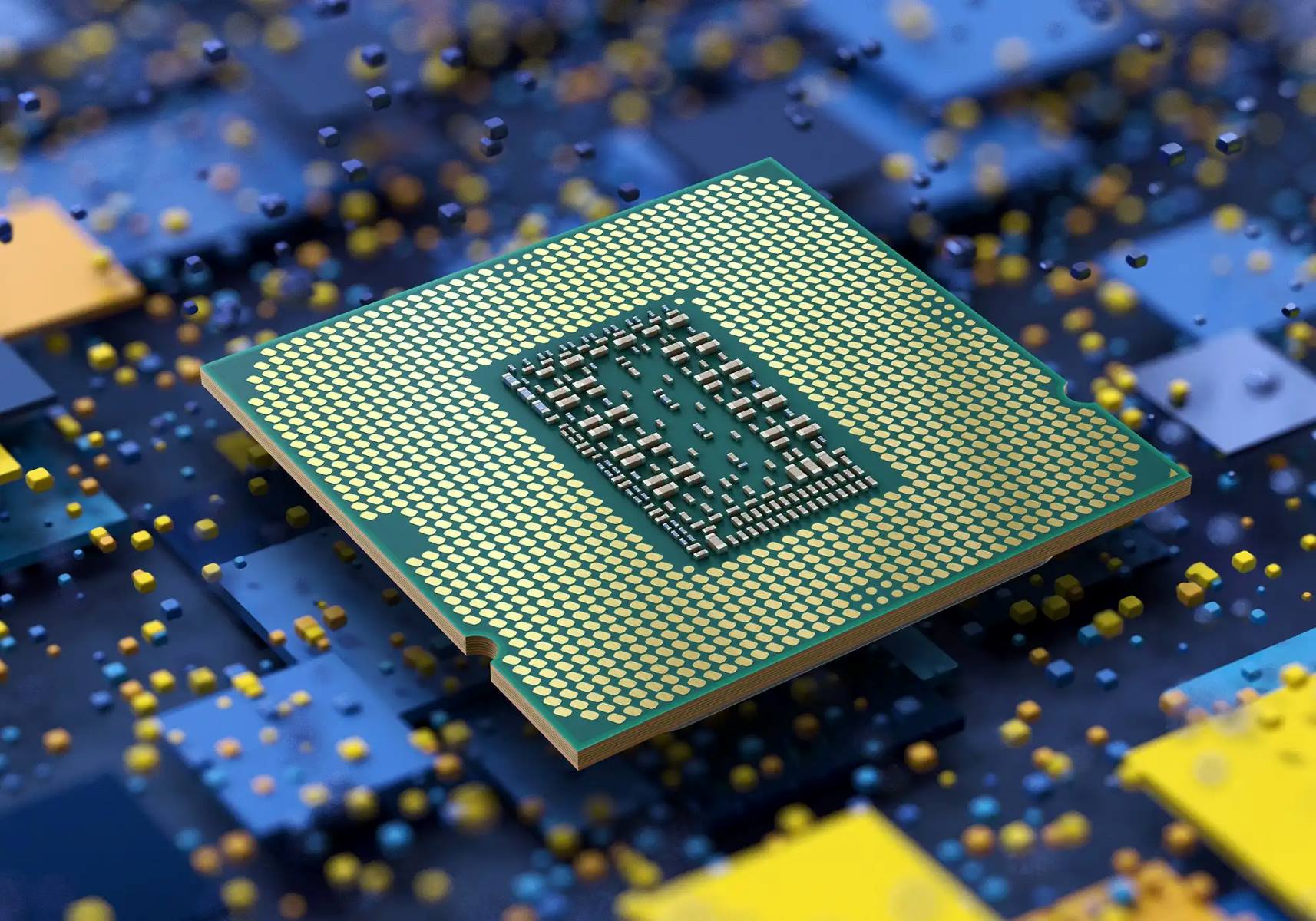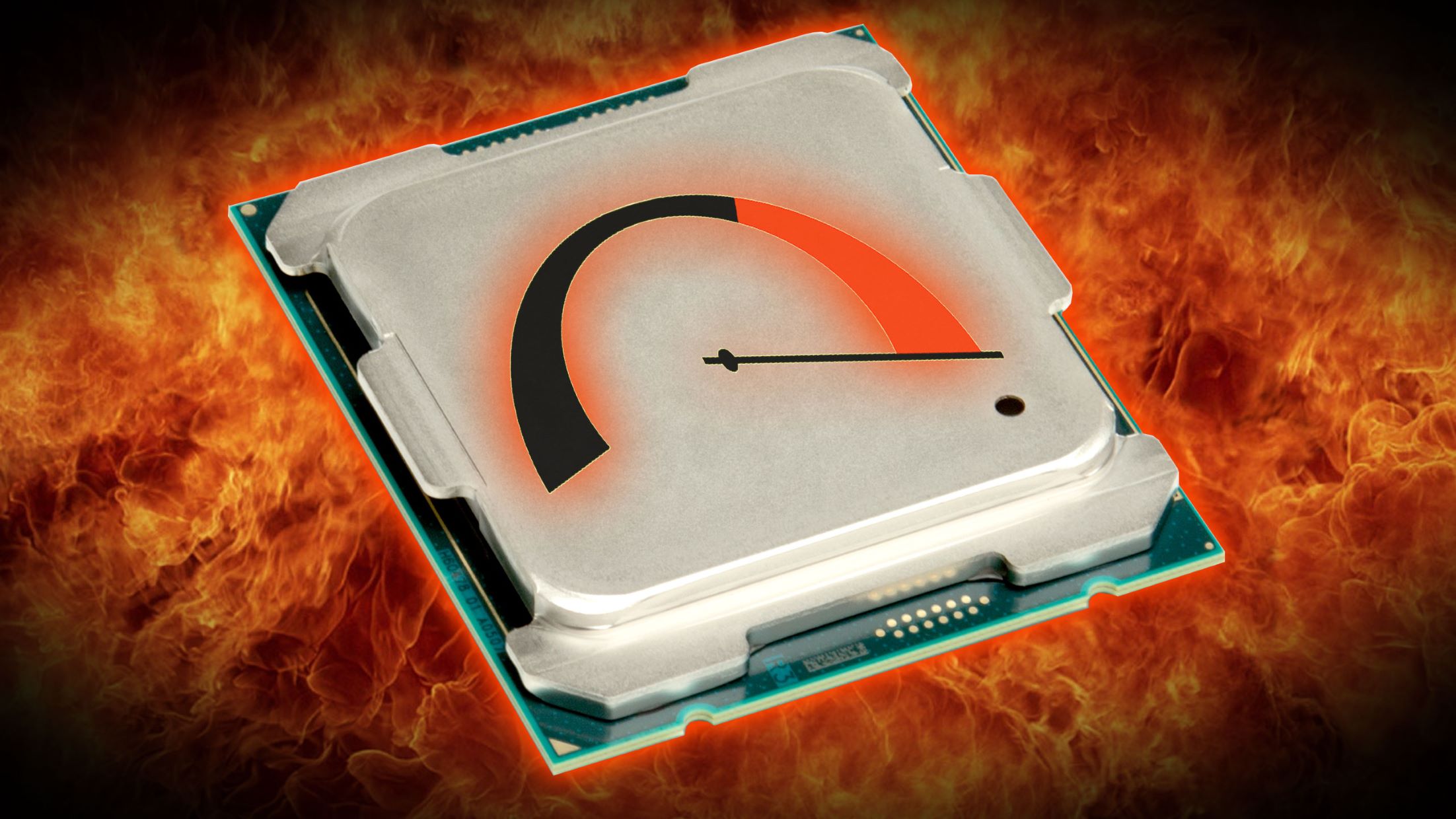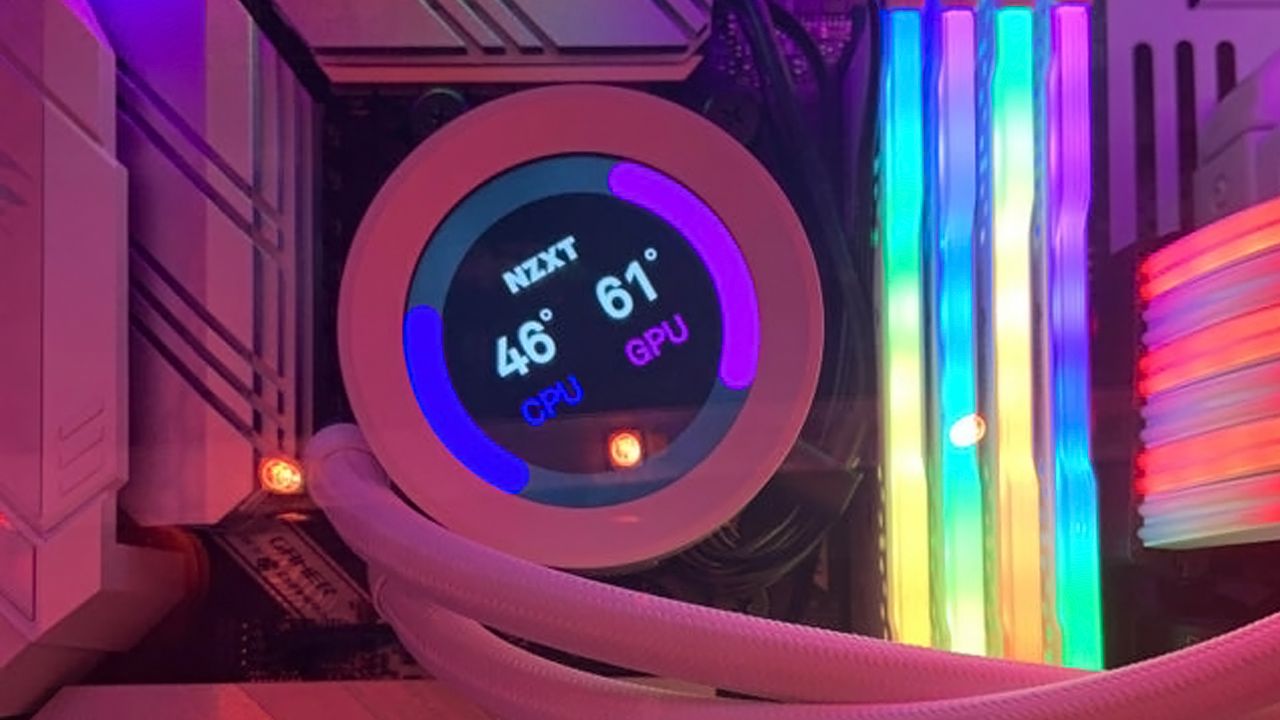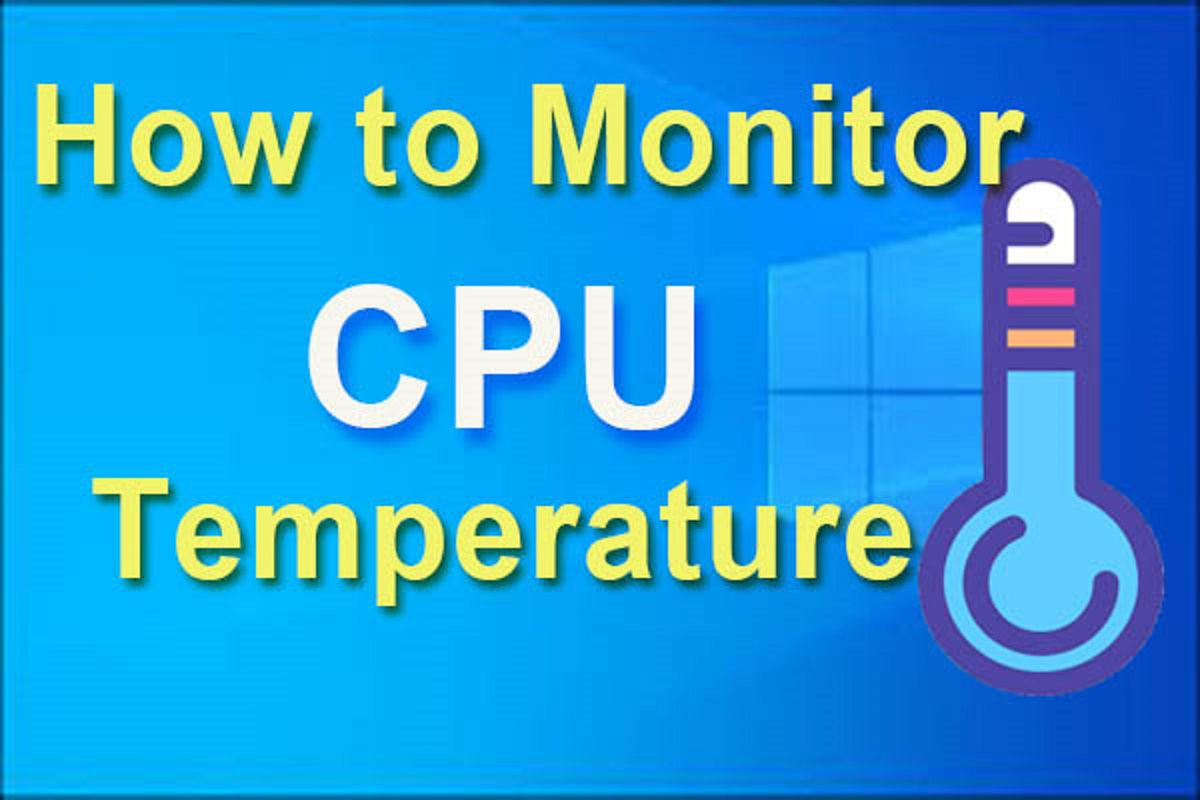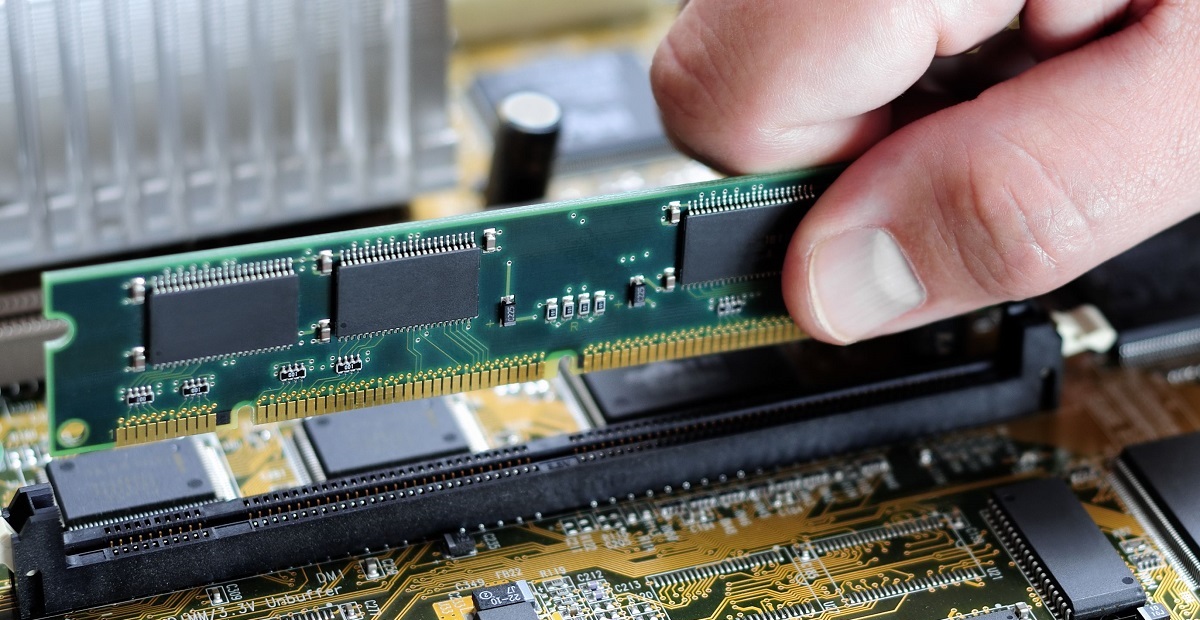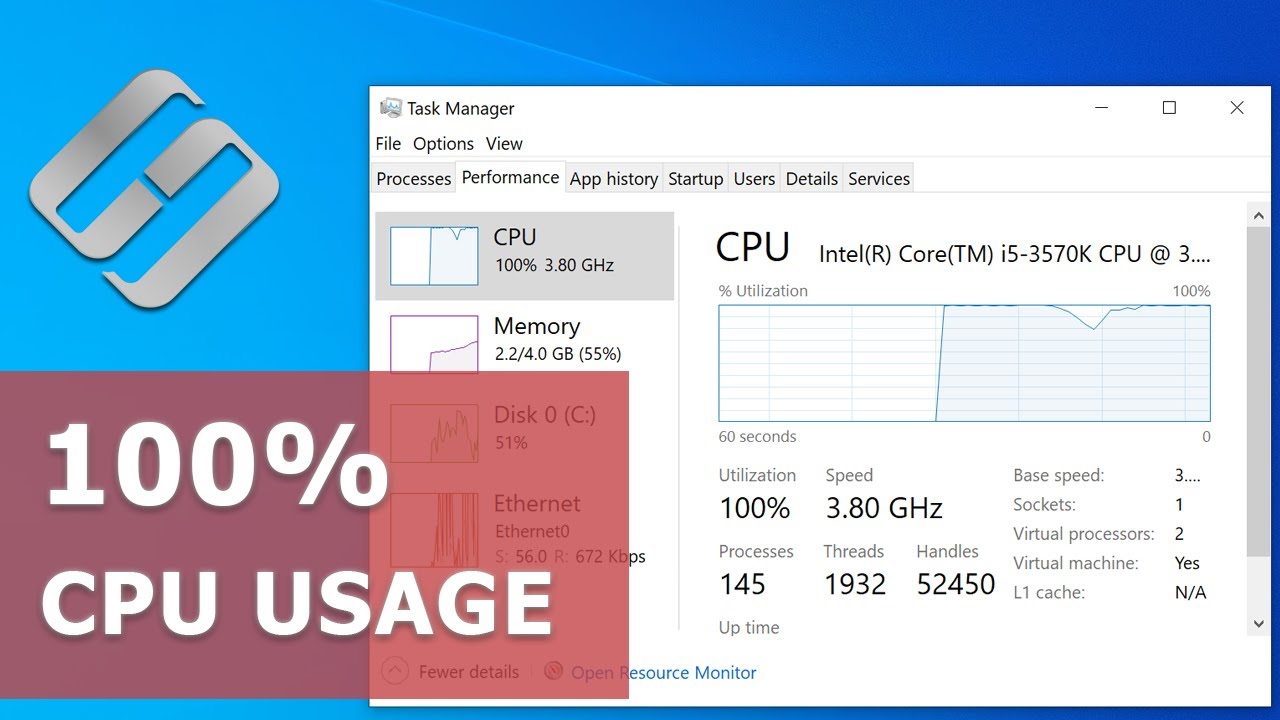Introduction
The Wmi Provider Host is a crucial process that runs on the Windows operating system, responsible for managing and providing information about the system’s hardware and software components. However, there are instances when the Wmi Provider Host starts using an unusually high amount of CPU resources, causing system slowdowns and decreased performance.
High CPU usage by the Wmi Provider Host process can be frustrating, as it not only affects the overall system performance but also leads to increased power consumption and potential overheating. Identifying the root cause of this issue is essential to prevent further complications and restore the system’s optimal functionality.
In this article, we will explore the possible reasons behind Wmi Provider Host’s high CPU usage and provide practical methods to troubleshoot and resolve the issue. Whether you are a casual computer user or an IT professional, understanding and addressing this problem can significantly improve the performance and stability of your Windows system.
Throughout the article, we will present step-by-step solutions to help you alleviate the high CPU usage caused by the Wmi Provider Host process. These methods range from basic troubleshooting steps to advanced configurations, enabling you to choose the most appropriate solution based on your specific situation and technical expertise.
It is important to note that the settings and options discussed in this article may vary depending on the version of Windows you are using. However, the underlying principles and troubleshooting techniques remain similar across different editions of the operating system.
Now, let’s delve into the details of the Wmi Provider Host process and explore why it may be utilizing excessive CPU resources on your Windows system.
What is Wmi Provider Host?
The Wmi Provider Host, also known as WmiPrvSE.exe, is a vital system process that operates within the Windows Management Instrumentation (WMI) framework. It acts as an intermediary between WMI and the various applications and services that rely on it to retrieve system information and execute management tasks. WMI is a comprehensive management infrastructure provided by Microsoft for Windows-based systems.
Wmi Provider Host plays a crucial role in collecting data about the hardware, software, and settings of your computer. It enables administrators, developers, and system monitoring tools to access and manipulate a wide range of system components via the WMI interface. These components include the processor, memory, disk drives, network adapters, software installations, and more.
By utilizing the WMI framework, applications can query the system and retrieve information in a structured and standardized manner. This data can be used for various purposes, such as system monitoring, troubleshooting, inventory management, and performance analysis.
The Wmi Provider Host process runs in the background, continuously monitoring and responding to various requests for system information. It acts as a provider of this information to other applications, making it available for viewing or manipulation. Additionally, it supports event notifications, allowing software to monitor changes in the system and take appropriate actions based on those events.
While the Wmi Provider Host is an essential component of the Windows operating system, it should typically consume only a minimal amount of CPU resources. However, in certain situations, this process may start consuming excessive CPU power, causing system slowdowns and performance issues. This can be due to various factors, including misbehaving applications, corrupt WMI repository, or outdated device drivers.
In the next sections, we will explore the potential reasons behind the high CPU usage by the Wmi Provider Host process and provide effective troubleshooting methods to resolve the issue. By understanding the inner workings of this process and following the recommended solutions, you can restore your system’s optimal performance and eliminate any disruptions caused by excessive CPU utilization.
Why is Wmi Provider Host using high CPU?
Excessive CPU usage by the Wmi Provider Host process can be a frustrating issue that affects the overall performance and responsiveness of your Windows system. To effectively troubleshoot and resolve this problem, it is crucial to understand the possible reasons behind this high CPU utilization. Here are some common causes:
1. Misbehaving applications or services: Certain applications or background services on your computer may be making excessive requests to the WMI framework, causing the Wmi Provider Host process to consume high CPU resources. These applications or services could be poorly optimized, outdated, or may have compatibility issues with the WMI infrastructure.
2. Corrupt WMI repository: The WMI repository stores important information about the system’s hardware and software components. If this repository becomes corrupt or inconsistent due to various reasons, it can lead to increased CPU usage by the Wmi Provider Host process. Corrupt WMI repository can be caused by software conflicts, system crashes, or improper system shutdowns.
3. Outdated or incompatible device drivers: Device drivers play a crucial role in enabling hardware components to communicate with the operating system. If you have outdated or incompatible device drivers installed on your system, it can result in abnormal behavior, including high CPU usage by the Wmi Provider Host process. Updating the drivers to the latest version can often resolve such issues.
4. Malware or virus infections: Malicious software or virus infections can negatively impact the system’s performance and lead to increased CPU usage. Some malware can intentionally target the Wmi Provider Host process to exploit vulnerabilities and cause it to consume excessive CPU resources. Running regular malware scans can help detect and remove any malicious programs that may be causing the issue.
5. Power settings and performance profiles: The power settings and performance profiles configured on your system can affect CPU usage. If your power plan is set to a high-performance mode, the CPU may run at higher clock speeds, leading to increased power consumption and heat generation. This can cause the Wmi Provider Host process to consume more CPU resources. Adjusting the power settings to a balanced or power-saving mode may help alleviate the issue.
Understanding these possible reasons for high CPU usage by the Wmi Provider Host process will allow you to diagnose and resolve the issue more effectively. In the following sections, we will discuss various troubleshooting methods to help you mitigate the high CPU usage and restore the optimal performance of your Windows system.
Impact of high CPU usage by Wmi Provider Host
When the Wmi Provider Host process starts consuming a significant amount of CPU resources, it can have several negative impacts on your system’s performance and overall user experience. Let’s explore the potential consequences of high CPU usage by the Wmi Provider Host process:
1. Decreased system performance: High CPU usage by the Wmi Provider Host process can cause your system to become slow, sluggish, and unresponsive. This can manifest as delayed response times when opening applications, switching between programs, or performing basic tasks. The overall user experience may suffer, making it frustrating to use the computer.
2. Increased power consumption: When the Wmi Provider Host process utilizes a significant portion of the CPU resources, it leads to increased power consumption. This can result in reduced battery life for laptops or increased electricity costs for desktop systems. It is especially problematic for portable devices, as high CPU usage requires more power, draining the battery faster.
3. System overheating: Excessive CPU usage generates more heat, which can cause your system components to overheat. Overheating can lead to thermal throttling, where the CPU slows down to prevent damage. This can further degrade system performance and stability. In extreme cases, continuous high CPU usage can even lead to hardware failures if proper cooling is not maintained.
4. Unresponsive applications: When the Wmi Provider Host process monopolizes CPU resources, other applications and processes may not receive the necessary computing power to function properly. This can result in applications freezing, becoming unresponsive, or crashing unexpectedly. Task manager may also show high CPU usage attributed to the Wmi Provider Host process.
5. Difficulty in multitasking: High CPU usage by the Wmi Provider Host process can make it challenging to multitask effectively. Performing multiple tasks simultaneously, such as running several applications or opening multiple browser tabs, can become significantly slower and more cumbersome. This can hinder productivity and reduce efficiency in completing tasks.
6. Noise and excessive fan activity: When the CPU is working at full capacity due to high CPU usage by the Wmi Provider Host process, the system fans may ramp up to dissipate the increased heat. This can result in louder fan noise, which can be distracting and annoying, particularly for users who prefer a quiet computing environment.
It is important to address the excessive CPU usage by the Wmi Provider Host process promptly to mitigate these negative impacts. In the next sections, we will discuss several troubleshooting methods that can help alleviate the high CPU usage and restore your system’s performance and stability.
How to check CPU usage by Wmi Provider Host?
In order to identify and diagnose the high CPU usage issue caused by the Wmi Provider Host process, it is important to accurately measure and monitor the CPU utilization. There are several methods you can use to check CPU usage specifically attributed to the Wmi Provider Host process. Here are some commonly used techniques:
- Task Manager: The built-in Task Manager in Windows provides a quick and easy way to monitor CPU usage. To access Task Manager, right-click on the taskbar and select “Task Manager” from the menu. Once Task Manager opens, click on the “Processes” or “Details” tab and look for the “WmiPrvSE.exe” or “Wmi Provider Host” process. The “CPU” column will show you the percentage of CPU resources being utilized by the Wmi Provider Host.
- Resource Monitor: Windows also includes a more detailed tool called Resource Monitor, which provides a comprehensive view of system resource usage. To open Resource Monitor, you can either search for it in the Start menu or access it from the Performance tab in Task Manager. Once in Resource Monitor, navigate to the “CPU” tab and look for the WmiPrvSE.exe or Wmi Provider Host process. The “% Total CPU” column will indicate the CPU usage by the Wmi Provider Host.
- Command Prompt and Tasklist: Another method is to use the Command Prompt and the “tasklist” command. To do this, open Command Prompt by searching for it in the Start menu. Then type the following command and press Enter:
tasklist /fi "imagename eq WmiPrvSE.exe". This will display detailed information about the Wmi Provider Host process, including its PID (Process ID). To check the CPU usage, you can then use the “tasklist” command with the PID using the following syntax:tasklist /fi "pid eq [PID]", replacing [PID] with the actual PID of the Wmi Provider Host process. - Third-party System Monitoring Tools: Several third-party system monitoring tools are available that provide more advanced and real-time monitoring capabilities. These tools can offer more detailed insights into CPU usage, including specific processes like Wmi Provider Host. Some popular options include HWMonitor, CPU-Z, and Process Explorer. These tools often provide a graphical representation of CPU usage and may offer additional features for advanced diagnostics.
By using one or more of these methods, you can accurately check the CPU usage by the Wmi Provider Host process and determine if it is indeed the cause of the high CPU usage on your system. Understanding the CPU utilization will help you further troubleshoot and implement appropriate solutions to resolve the issue.
Troubleshooting high CPU usage by Wmi Provider Host
Experiencing high CPU usage by the Wmi Provider Host process can significantly impact your system’s performance and overall user experience. Fortunately, there are several troubleshooting methods you can utilize to identify and resolve this issue. Let’s explore some effective techniques:
- Method 1: Restart Wmi Provider Host service: Sometimes, restarting the Wmi Provider Host service can help resolve high CPU usage. To do this, open the Run dialog by pressing Win + R, type “services.msc”, and hit Enter. Locate the “Windows Management Instrumentation” service, right-click on it, and select “Restart.” This action will restart the Wmi Provider Host process, which may alleviate the high CPU usage.
- Method 2: Disable specific WMI provider components: In some cases, high CPU usage may be caused by specific WMI provider components. To disable them, open the Command Prompt as an administrator, and run the following command:
wmic /NAMESPACE:\\root\subscription Path __EventFilter WHERE Name='EventFilterName' DELETE. Replace “EventFilterName” with the name of the specific WMI provider component you want to disable. Bear in mind that disabling certain components may limit functionality or affect system monitoring capabilities, so exercise caution and only disable components that are not critical for your operations. - Method 3: Update device drivers: Outdated or incompatible device drivers can contribute to high CPU usage by the Wmi Provider Host process. To update drivers, visit the manufacturer’s website or use third-party driver update tools. Identify the devices with outdated drivers and download the latest versions. Install them following the provided instructions, and then restart your system for the changes to take effect.
- Method 4: Perform a malware scan: Malware infections can cause abnormal CPU usage by the Wmi Provider Host process. Run a thorough scan using reputable antivirus or anti-malware software to detect and remove any malicious programs. Ensure your security software is up to date, perform a full system scan, and follow the recommended actions to clean and quarantine any detected threats.
- Method 5: Adjust power settings: Your power settings and performance profiles can impact CPU usage. Adjusting power settings to a balanced or power-saving mode can help reduce CPU consumption. Open Power Options by searching for it in the Start menu, and select the desired power plan. Ensure that the plan’s settings are optimized for energy efficiency rather than high performance. Additionally, check the advanced power settings to enable options like processor power management and system cooling.
By implementing these troubleshooting methods, you can effectively mitigate high CPU usage caused by the Wmi Provider Host process. It is important to note that the success of each method may vary depending on your specific system configuration and the underlying cause of the issue. It may be necessary to employ a combination of these techniques or seek further assistance from professional support channels if the problem persists.
Method 1: Restart Wmi Provider Host service
One of the simplest and most effective methods to address high CPU usage by the Wmi Provider Host process is to restart the service. Restarting the Wmi Provider Host service can help resolve any temporary glitches or issues that may be causing the excessive CPU utilization. Here’s how you can restart the Wmi Provider Host service:
- Press the Windows key and the R key simultaneously to open the Run dialog box.
- Type
services.mscin the Run dialog box and press Enter to open the Services window. - In the Services window, locate the “Windows Management Instrumentation” service from the list.
- Right-click on the “Windows Management Instrumentation” service and select “Restart” from the context menu. If the service is already stopped, select “Start” instead.
- Wait for the service to restart, which may take a few moments.
- Once the service has been restarted, close the Services window.
Restarting the Wmi Provider Host service will terminate all active WMI processes and start them again from scratch. This can help resolve any temporary issues or conflicts that may have been causing the high CPU usage. After the restart, the Wmi Provider Host process should run more efficiently, resulting in a reduction in CPU utilization.
It’s important to note that restarting the Wmi Provider Host service is generally a safe procedure and will not cause any data loss or system instability. However, it may temporarily interrupt WMI-related processes or applications that depend on the service. In most cases, these interruptions are minor and will not have a significant impact on your system’s overall function.
If the high CPU usage issue persists even after restarting the Wmi Provider Host service, you can proceed to try other troubleshooting methods. It is worth experimenting with multiple solutions to find the one that works best for your specific system configuration and situation. By implementing these methods, you can effectively address the high CPU usage caused by the Wmi Provider Host process and restore your system’s performance and stability.
Method 2: Disable specific WMI provider components
If you continue to experience high CPU usage by the Wmi Provider Host process even after restarting the service, it may be necessary to disable specific WMI provider components that could be causing the issue. Disabling these components can help alleviate the CPU utilization and restore your system’s performance. Here’s how you can disable specific WMI provider components:
- Open the Command Prompt by searching for it in the Start menu. Right-click on the Command Prompt icon and select “Run as administrator” to open it with administrative privileges.
- Type the following command in the Command Prompt window:
wmic /NAMESPACE:\\root\subscription Path __EventFilter WHERE Name='EventFilterName' DELETE
Replace “EventFilterName” with the name of the specific WMI provider component you want to disable. Make sure to enclose the component name within single quotes. You can find the specific provider component causing high CPU usage by analyzing the Task Manager or other system monitoring tools. - Press Enter to execute the command. You should see a message confirming the successful deletion of the specified provider component.
- Repeat the process for any other WMI provider components that are causing high CPU usage.
- After disabling the desired components, close the Command Prompt window.
Disabling specific WMI provider components removes them from the WMI framework, preventing them from generating unnecessary CPU usage. However, it is crucial to exercise caution when disabling these components as they may be critical for certain system functionalities or applications. It is recommended to disable only those components that are not essential for your operations and to thoroughly test your system after making any changes.
If you are unsure about which specific WMI provider components to disable, it might be helpful to seek advice from technical forums or consult with system administrators or IT professionals who can provide guidance based on your specific system configuration and requirements. Remember to restart your system after making any changes to allow the modifications to take effect.
By disabling problematic WMI provider components, you can potentially reduce CPU utilization and mitigate high CPU usage by the Wmi Provider Host process. If the issue persists, continue to explore other troubleshooting methods to address the problem effectively and restore your system’s optimal performance.
Method 3: Update device drivers
Outdated or incompatible device drivers can contribute to high CPU usage by the Wmi Provider Host process. Updating your device drivers to the latest versions can help resolve compatibility issues and improve system performance. Follow the steps below to update your device drivers:
- Identify outdated drivers: Open Device Manager by right-clicking on the Start menu and selecting “Device Manager” from the list. Expand the categories and look for any devices marked with a yellow exclamation mark, indicating outdated or problematic drivers.
- Visit the manufacturer’s website: Once you have identified the outdated drivers, visit the respective device manufacturer’s website to download the latest driver versions. Make sure to download drivers that are compatible with your Windows version and system architecture (32-bit or 64-bit).
- Download and install the drivers: Locate the appropriate driver downloads on the manufacturer’s website, ensuring they match the specific devices you identified in Device Manager. Download the drivers and save them to a location on your computer. Follow the installation instructions provided by the manufacturer to install the updated drivers.
- Restart your system: After installing the updated drivers, it is recommended to restart your computer. This allows the changes to take effect and ensures that any lingering driver-related issues are resolved.
- Verify driver updates: Once your system has restarted, revisit Device Manager and verify that the previously outdated drivers are now updated. The devices should no longer display the yellow exclamation mark, indicating successful driver updates. If any drivers remain outdated, repeat the process to ensure all drivers are up to date.
Updating device drivers can address compatibility issues and optimize the operation of hardware components, which can help reduce the CPU usage by the Wmi Provider Host process. It is important to keep your drivers up to date to ensure optimal system performance and stability.
If you are unsure about which drivers to update or encounter difficulties during the process, you can use third-party driver update software. These tools can automatically scan your system, identify outdated drivers, and provide a convenient way to download and install the latest versions. However, exercise caution and ensure the software is reputable and trustworthy before using it.
Regularly updating your device drivers can help prevent high CPU usage by the Wmi Provider Host process caused by outdated or incompatible drivers. By ensuring that your system has the latest drivers installed, you can improve system performance and maintain efficient CPU utilization.
Method 4: Perform a malware scan
Malware or virus infections can contribute to high CPU usage by the Wmi Provider Host process. These malicious programs can exploit vulnerabilities, disrupt system processes, and cause abnormal CPU usage. Performing a thorough malware scan can help detect and eliminate any infected files or programs. Follow the steps below to perform a malware scan:
- Update your antivirus software: Ensure that your antivirus software is up to date with the latest virus definitions. This ensures that your system is protected against the most recent threats.
- Run a full system scan: Open your antivirus software and initiate a full system scan. The scan may take some time to complete as it scans all files and directories on your computer for potential malware or viruses.
- Quarantine or delete detected threats: When the scan is complete, review the scan results and identify any detected threats. Your antivirus software may offer options to quarantine or delete the infected files. Follow the recommended actions to contain and remove the threats.
- Perform additional scans with anti-malware tools: To ensure comprehensive coverage, consider running additional scans with reputable anti-malware tools. Some popular options include Malwarebytes, HitmanPro, or Windows Defender Offline. These tools can detect and remove malware that may have been missed by your primary antivirus software.
- Regularly update and scan: To maintain a secure system, it is essential to keep your antivirus software and anti-malware tools up to date. Schedule regular scans and updates to ensure ongoing protection against new and evolving threats.
Performing a malware scan helps to identify and remove any malicious programs that may be causing high CPU usage by the Wmi Provider Host process. By eliminating these threats, you can restore the stability and performance of your system.
If the scan detects and removes malware or viruses, it is important to monitor your system’s performance afterward. High CPU usage caused by malware can lead to lingering effects even after removal. Monitor your system using Task Manager or other system monitoring tools to ensure that the CPU usage by the Wmi Provider Host process returns to normal levels.
Maintaining a strong defense against malware is crucial for optimal system performance and security. By regularly scanning for and removing any malicious programs, you can reduce the risk of high CPU usage and ensure a safe computing environment.
Method 5: Adjust power settings
Making adjustments to the power settings on your system can help alleviate high CPU usage by the Wmi Provider Host process. By optimizing the power settings, you can reduce the CPU’s power consumption, leading to lower CPU utilization and improved system performance. Here’s how you can adjust the power settings:
- Open Power Options: Search for “Power Options” in the Start menu and click on it to open the Power Options control panel.
- Select a power plan: In the Power Options window, you will see a list of available power plans. Choose a power plan that is energy-efficient, such as “Balanced” or “Power saver.” These power plans are designed to strike a balance between performance and power consumption.
- Change advanced power settings: To further optimize your power settings, click on “Change plan settings” next to the selected power plan. Then, click on “Change advanced power settings.” A new window will open with various power settings.
- Adjust processor power management: In the advanced power settings window, expand the “Processor power management” section. Here, you can modify settings such as the minimum and maximum processor state, which determines the CPU’s clock speed and power consumption. Decreasing the maximum processor state can help reduce CPU usage and power consumption.
- Configure system cooling policy: In the same advanced power settings window, locate the “System cooling policy” setting within the “Processor power management” section. If it is set to “Active,” change it to “Passive.” This change prioritizes cooler system temperatures over immediate performance, helping in reducing CPU utilization.
- Save and exit: After adjusting the power settings, click on “Apply” and then “OK” to save the changes. You may need to restart your system for the changes to take effect.
By adjusting the power settings, you can optimize the CPU’s power consumption and reduce the strain on the Wmi Provider Host process, resulting in lower CPU usage. These settings are particularly effective on laptops and portable devices, where power efficiency is vital for longer battery life.
It’s important to note that adjusting power settings to reduce CPU usage may impact performance in certain scenarios. If you require maximum performance, such as for resource-intensive tasks or gaming, you might need to switch back to a higher-performance power plan temporarily.
Regularly assessing and optimizing power settings can assist in maintaining an energy-efficient and balanced system. By reducing unnecessary CPU usage through power configurations, you can enhance overall system performance and reduce the strain on the Wmi Provider Host process.
Conclusion
Experiencing high CPU usage by the Wmi Provider Host process can be frustrating and impact the performance of your Windows system. However, through effective troubleshooting methods and optimizations, you can resolve this issue and restore your system’s performance and stability.
In this article, we explored various aspects of high CPU usage by the Wmi Provider Host process. We discussed what the Wmi Provider Host is and the potential reasons behind its excessive CPU utilization. We also delved into the impact of high CPU usage on the system, ranging from decreased performance to increased power consumption and system overheating.
To tackle the high CPU usage, we presented several troubleshooting methods. We covered restarting the Wmi Provider Host service to refresh the process and resolve temporary glitches. Additionally, we discussed disabling specific WMI provider components and updating device drivers to address compatibility issues and improve system performance. Performing a malware scan to detect and eliminate any infected files or programs was also highlighted.
Lastly, we explored the power settings adjustment method. By optimizing power settings, you can reduce CPU power consumption and decrease CPU utilization by the Wmi Provider Host process.
It is important to note that these troubleshooting methods may need to be applied in combination to effectively resolve the high CPU usage issue. Each method targets different potential causes, so finding the solution that best suits your specific system configuration and requirements is essential.
By following the troubleshooting methods discussed in this article, you can successfully mitigate high CPU usage by the Wmi Provider Host process and restore your system’s optimal performance. Regular maintenance and keeping your system up to date are also crucial for preventing future high CPU usage issues.
Remember, if you encounter any difficulties or are uncertain about specific troubleshooting steps, it is recommended to seek guidance from technical forums, consult with IT professionals, or contact your device manufacturer’s support. With patience and persistence, you can overcome the high CPU usage by the Wmi Provider Host process and enjoy a smoother and more efficient computing experience.







